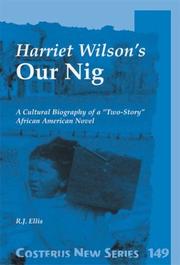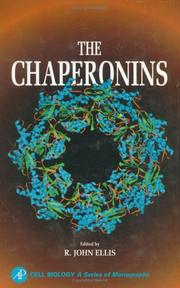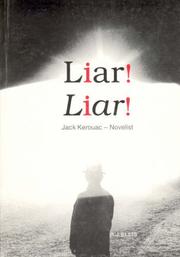| Listing 1 - 10 of 25 | << page >> |
Sort by
|
Book
ISBN: 9401777470 9401777497 Year: 2016 Publisher: Dordrecht : Springer Netherlands : Imprint: Springer,
Abstract | Keywords | Export | Availability | Bookmark
 Loading...
Loading...Choose an application
- Reference Manager
- EndNote
- RefWorks (Direct export to RefWorks)
Evolution is just a theory, isn’t it? What is a scientific theory anyway? Don’t scientists prove things? What is the difference between a fact, a hypothesis and a theory in science? How does scientific thinking differ from religious thinking? Why are most leading scientists atheists? Are science and religion compatible? Why are there so many different religious beliefs but only one science? What is the evidence for evolution? Why does evolution occur? If you are interested in any of these questions and have some knowledge of biology, this book is for you. “There are many books that explain evolution and how science works, but few can claim the erudition and clarity of this one. Professor Ellis shows elegantly how the philosophical advances of the Enlightenment paved the way for the modern construction of science, and how evolutionary theory follows its best practices. It is a pity that most undergraduates never get a real course in scientific thinking, but you can rectify that by giving them a copy of this book”. Kevian Padian, Professor and Curator, University of California, Berkeley. “In this highly readable book John Ellis masterfully describes Darwin`s theory of evolution and the evidence for it. He shows how even the most intricate of biological systems could have arisen by random mutation and survival of the fittest. But for me the most precious aspect of the book is its uncompromising distinction between the natural (scientific) explanation of the universe and all the mutually contradictory supernatural (religious) explanations. Especially in these days when religion is constantly in the news, this book should be a must-read for students, commentators and the thinking public”. Professor Sir David Hopwood F.R.S., John Innes Centre, Norwich. “John Ellis has extensively revised his excellent book `How Science Works`, which uses evolution as an example of the scientific method. As well as describing the basic principles of evolution by natural selection, he makes use of the latest findings in palaeontology, molecular biology and organismal biology to show how the theory stands up to empirical tests. The book is written in a clear and simple style, which makes it accessible to the general reader, as well as being suitable for an introductory undergraduate course on evolution. Only the most hardened creationist would fail to be convinced by it”. Professor Brian Charlesworth F.R.S., Institute of Evolutionary Biology, University of Edinburgh.
Medicine. --- Human genetics. --- Evolutionary biology. --- Animal genetics. --- Popular works. --- Biomedicine. --- Human Genetics. --- Evolutionary Biology. --- Biomedicine general. --- Animal Genetics and Genomics. --- Popular Science, general. --- Evolution (Biology) --- Science --- Philosophy. --- Normal science --- Philosophy of science --- Animal evolution --- Animals --- Biological evolution --- Darwinism --- Evolutionary biology --- Evolutionary science --- Origin of species --- Evolution --- Biology --- Biological fitness --- Homoplasy --- Natural selection --- Phylogeny --- Evolution (Biology). --- Science (General). --- Genetics --- Clinical sciences --- Medical profession --- Human biology --- Life sciences --- Medical sciences --- Pathology --- Physicians --- Heredity, Human --- Physical anthropology --- Biomedicine, general. --- Health Workforce
Book
ISBN: 0521248167 Year: 1984 Publisher: Cambridge ; London ; New York, NY : Cambridge University Press,
Abstract | Keywords | Export | Availability | Bookmark
 Loading...
Loading...Choose an application
- Reference Manager
- EndNote
- RefWorks (Direct export to RefWorks)
Chloroplasts --- Formation. --- CELL NUCLEUS --- CHLOROPLASTS --- BIOCHEMISTRY --- GENETICS --- LIGHT --- BIOGENESIS --- INTERACTIONS --- DEVELOPMENT
Article
Abstract | Keywords | Export | Availability | Bookmark
 Loading...
Loading...Choose an application
- Reference Manager
- EndNote
- RefWorks (Direct export to RefWorks)

ISBN: 9042011572 9004487689 Year: 2003 Publisher: Amsterdam New York Rodopi
Abstract | Keywords | Export | Availability | Bookmark
 Loading...
Loading...Choose an application
- Reference Manager
- EndNote
- RefWorks (Direct export to RefWorks)

ISBN: 012237455X 9780122374555 9780080528885 0080528880 Year: 1996 Publisher: San Diego Academic Press
Abstract | Keywords | Export | Availability | Bookmark
 Loading...
Loading...Choose an application
- Reference Manager
- EndNote
- RefWorks (Direct export to RefWorks)
The first of its kind, this volume presents the latest research findings on the chaperonins, the best studied family of a class of proteins known as molecular chaperones. These findings are changing our view of some fundamental cellular processes involving proteins, especially how proteins fold into their functional conformations. Key Features * Origins of the new view of protein folding * Prokaryotic chaperonins * Eukaryotic chaperonins * Evolution of the chaperonins * Refolding of denatured proteins * Organelle biosynthesis * Biomedical aspects
Histology. Cytology --- General biochemistry --- Molecular chaperones. --- Molecular chaperones --- 576.32/.36 --- 577.112 --- 576.32/.36 Cell physiology. Cell biochemistry. Cell biophysics. Molecular biology of the cell --- Cell physiology. Cell biochemistry. Cell biophysics. Molecular biology of the cell --- Chaperone proteins --- Chaperones, Molecular --- Chaperonins --- Proteins --- 577.112 Proteins

ISBN: 1871551536 Year: 1999 Publisher: London Greenwich Exchange
Abstract | Keywords | Export | Availability | Bookmark
 Loading...
Loading...Choose an application
- Reference Manager
- EndNote
- RefWorks (Direct export to RefWorks)

ISBN: 9789004487680 9789042011571 Year: 2003 Publisher: Leiden; Boston : BRILL
Abstract | Keywords | Export | Availability | Bookmark
 Loading...
Loading...Choose an application
- Reference Manager
- EndNote
- RefWorks (Direct export to RefWorks)
Addressed to all readers of Our Nig , from professional scholars of African American writing through to a more general readership, this book explores both Our Nig 's key cultural contexts and its historical and literary significance as a narrative. Harriet E. Wilson's Our Nig (1859) is a startling tale of the mistreatment of a young African American mulatto woman, Frado, living in New England at a time when slavery, though abolished in the North, still existed in the South. Frado, a Northern 'free black', yet treated as badly as many Southern slaves of the time, is unforgettably portrayed as experiencing and resisting vicious mistreatment. To achieve this disturbing portrait, Harriet Wilson's book combines several different literary genres - realist novel, autobiography, abolitionist slave narrative and sentimental fiction. R.J. Ellis explores the relationship of Our Nig to these genres and, additionally, to laboring class writing (Harriet Wilson was an indentured farm servant). He identifies the way Our Nig stands as a double first: the first separately-published novel written in English by an African American female it is also one of the first by a member of the laboring class about the laboring class. This study explores how, as a result, Our Nig tells a series of disturbing two-stories about America's constitutional guarantee of 'freedom' and the way these relate to Frado's farm life.
Book
Year: 1976 Publisher: The Hague Stichting CONCAWE
Abstract | Keywords | Export | Availability | Bookmark
 Loading...
Loading...Choose an application
- Reference Manager
- EndNote
- RefWorks (Direct export to RefWorks)
Book
Year: 1974 Publisher: The Hague Stichting CONCAWE
Abstract | Keywords | Export | Availability | Bookmark
 Loading...
Loading...Choose an application
- Reference Manager
- EndNote
- RefWorks (Direct export to RefWorks)
Book
Year: 1984 Publisher: Cambridge : Cambridge University,
Abstract | Keywords | Export | Availability | Bookmark
 Loading...
Loading...Choose an application
- Reference Manager
- EndNote
- RefWorks (Direct export to RefWorks)
Plastids --- Plastids --- Chlorophylls --- Chlorophylls --- biology --- biology
| Listing 1 - 10 of 25 | << page >> |
Sort by
|

 Search
Search Feedback
Feedback About UniCat
About UniCat  Help
Help News
News